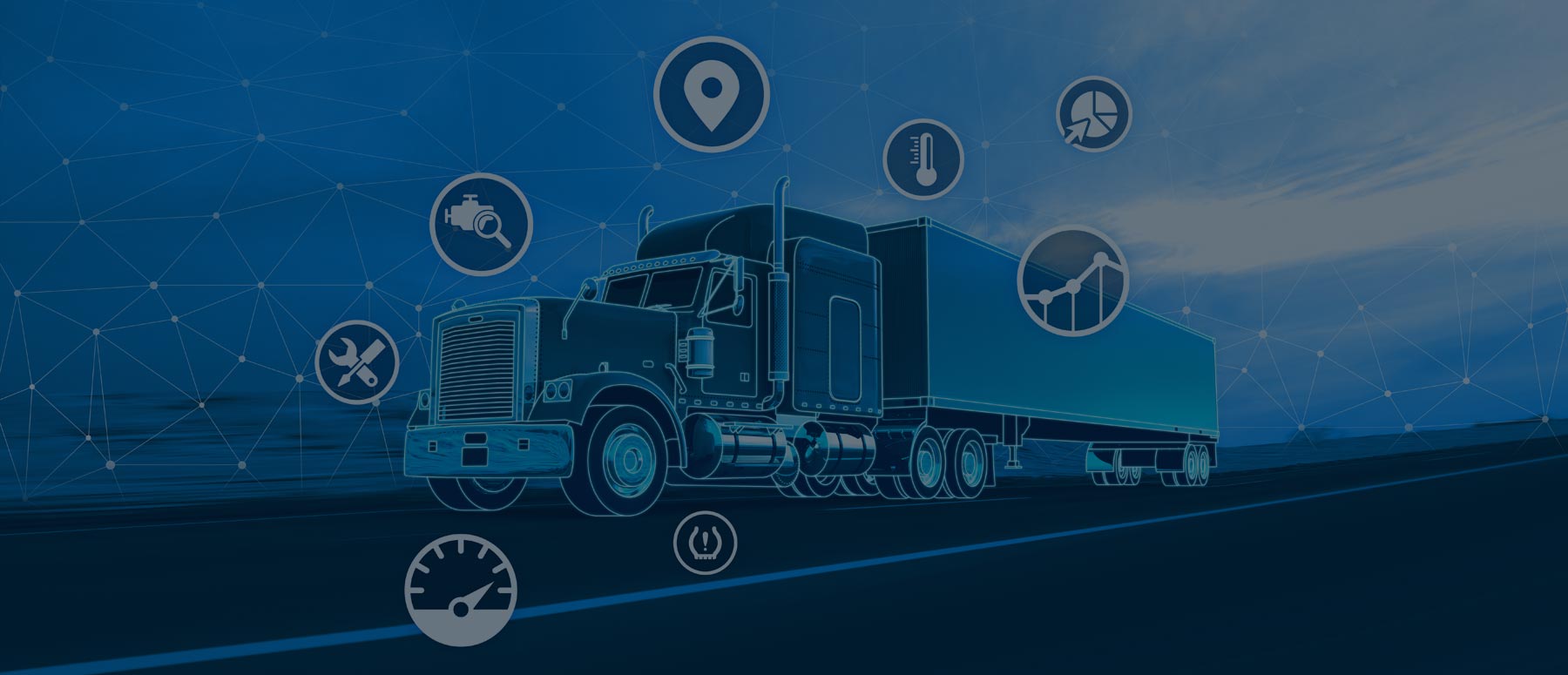
The open platform advantage: How to get maximum value from your telematics system

Table of contents
- Open platform: The new way of doing business
- What is open platform?
- Comparing telematics systems: The good, the bad, and the ugly
- Getting maximum ROI from your telematics system
- The combination of telematics and mobile apps is a powerful combination for both drivers and fleet owners.
- Mobile apps that connect with telematics:
- Remote diagnostics and telematics systems can work together to simplify the job of truck mechanics and maintenance managers.
- Features of a remote diagnostics system:
- A joint report by DHL and Cisco predicts that IoT will “transform how logistics providers make decisions, including about how goods are stored, monitored, routed, serviced, and delivered to customers, as well as operational health and safety practices.”[11] They estimate the number of connected devices will rise to 50 billion by the year 2020.
- More fleets are getting on board with big data. ATA reports that big data will be “transformative” on trucking.[13]
- Big data use cases:
- Does your telematics provider measure up?
- Summary
- References
Open platform: The new way of doing business
There is the old way of doing things and the new way.
The old way of telematics is a closed system. It’s expensive, you’re locked in, and there is limited access to data. The new way of doing things is open platform. It’s more affordable, easy to customize, and most importantly, you have open access to your data.
This white paper reveals that although telematics systems may seem similar, they can in fact vary greatly. Through a comparison of hardware, cost, data collection, and other key factors, it is shown how open platform offers the total package: affordability, reliability, and ease of use, with more control and flexibility. The second section describes how fleets are getting more from their telematics investment through integration and IoT. Finally, a list of questions is provided for helping evaluate telematics providers.
Now more than ever, fleets are collecting large amounts of data.
NAFA Fleet Management Association declared that “Telematics is quickly becoming an important part of the ‘smart connected’ vehicle.”[1] Clem Driscoll reports “approximately 8.0 million GPS/wireless devices are used to monitor fleet vehicles, mobile workers, and assets in the field,” and “1.1 million trucks are equipped with a GPS fleet management solution.”[2] Every truck in the world — totalling 40 million trucks — will be connected by 2020, as estimated by Frost & Sullivan.[3]
The question is… Are you getting the most out of your data?

What is open platform?
It’s not enough to just collect data. Your telematics system should help you understand the data and use it to grow your business. This is what open platform telematics is all about.
Open platform means easy to use. It also means collaboration and innovation. With the open platform, you have open access. There is no lock-in and you are in control of your data. Integration with other programs or systems is simplified. You have the ability to expand, flex, and scale.
SDK & APIs: Tools of the Open Platform
The tools that open the access to a system are the software development kit (SDK) and application programming interfaces (APIs). Gartner reports: “As the Internet of Things (IoT) gets smarter, using an application programming interface (API) to communicate, transact and even negotiate with one another will become the norm.” [4]
SDK & APIs = The way you get data in and out of the system.
Not every system is created equal. A truly open system has an SDK and APIs that are free and easy to use.
What to Expect from a Good SDK:
- Single Sign-On
- Library of samples
- Flexibility and control
- Reliability
- Free
Comparing telematics systems: The good, the bad, and the ugly
This table shows the difference between open platform telematics and other systems. Hardware, cost, data collection, and reporting are key considerations. However, the speed of installation and troubleshooting process should not be overlooked. Those two things can have a real impact on whether your trucks sit in the shop for extended periods or are on the road making money. Access to data, security, and software/firmware updates are also critical to success.
Summary table: Comparing telematics systems
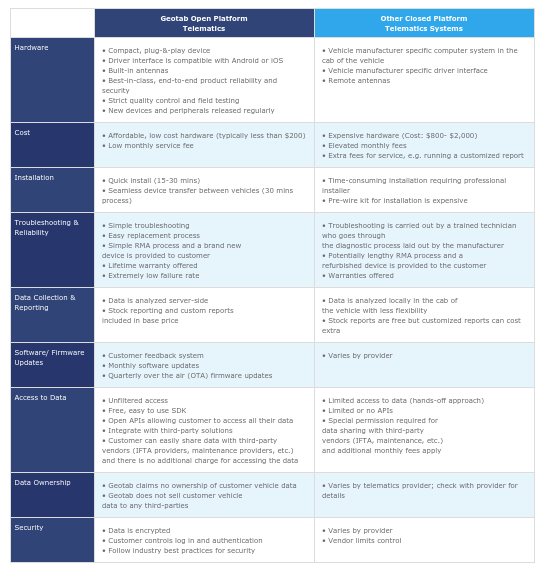
Getting maximum ROI from your telematics system
Working in the cloud, big data, and mobile are the future of business. A survey conducted by Harvard Business Review found that these three trends plus social media are having a positive impact on business performance, spurring increases in productivity and revenue, improving customer service, and cultivating development and innovation.[5]
The open telematics platform is part of this transformation. Telematics expansion and integration is a sure fire way to get more value from your investment.
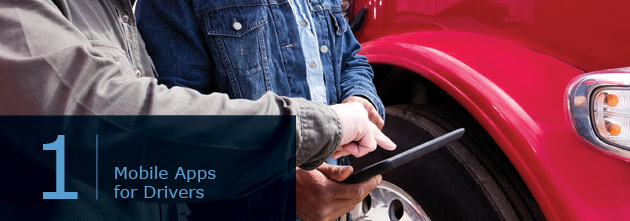
The combination of telematics and mobile apps is a powerful combination for both drivers and fleet owners.
In trucking, electronic logging is ushering in a new era of productivity and safety. The Federal Motor Carrier Safety Administration (FMCSA) declares that “real-time connection between fleet management and fleet vehicles” will help speed up business through better route planning and tracking of deliveries and driving hours.[6] A study by the FMCSA found that trucks equipped with electronic hours-of-service recorders had significantly lower crash rates than trucks without (11.7% lower for all crash types and 5.1% lower for preventable crashes).[6]
Beyond benefits for compliance, electronic logging devices (ELDs) open up access to critical real-time data. Jeff Simon from DOT Safety Plus writes “The carrier who learns how to best utilize the real time delivery of data produced by ELDs will have a distinct competitive advantage over those who don’t.”[7] In general, it has been found that equipping employees with mobile devices can improve worker productivity by making it easier to collaborate, innovate, and access critical information on- the-go.[8]
Dispatch and work-flow apps provide accurate location tracking, arrival and departure updates, error-free order processing, navigation, and complete proof of service capture.
Gamification apps for drivers are gaining popularity among fleets as a way to achieve productivity, safety, or other corporate goals.[9] In particular, a driver’s scorecard can help motivate drivers and create a positive work environment. Research and Markets forecasts that the global gamification market will grow by more than 48% by 2019.[10]
Mobile apps that connect with telematics:
- E-Logs for Hours of Service (HOS), Driver Vehicle Inspection Reporting (DVIR), and Driver ID
- Navigation, Dispatch, and Messaging
- Paperless Forms, Manuals, and Invoices
- Electronic Signature Capture
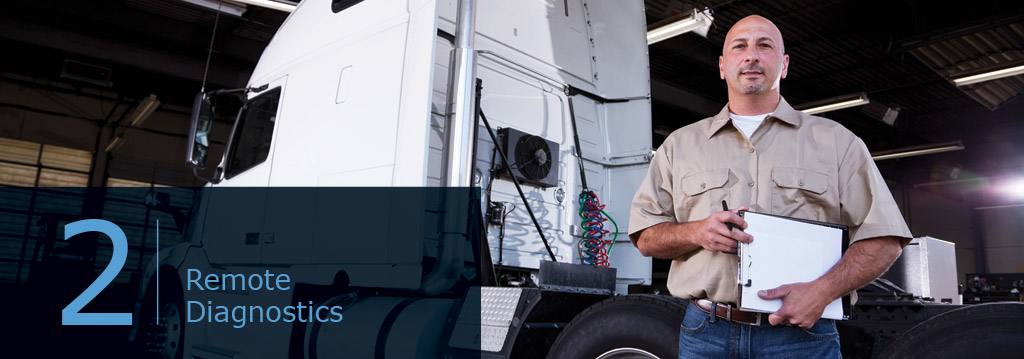
Remote diagnostics and telematics systems can work together to simplify the job of truck mechanics and maintenance managers.
Raw fault data is pulled from the API platform and translated into detailed instructions, making it easier to understand faults and prioritize repairs.
Modern vehicles can generate thousands of different fault codes, from the engine controller, transmission controller, brake controller, and a variety of other controllers in the vehicle. By translating engine system fault codes — providing a clear description, with severity, and recommended plan of action — remote diagnostics removes the guesswork and shortens lead time.
Features of a remote diagnostics system:
- Immediate visibility to faults within an online portal
- Easy-to-understand fault descriptions
- Fault code action plans
- Map tool for locating trucks and finding nearby dealers, hotels, and towing providers
- Real-time, comprehensive reports
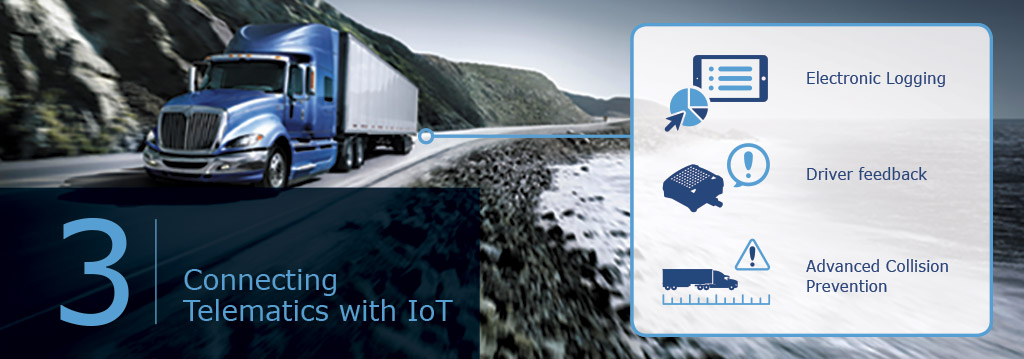
A joint report by DHL and Cisco predicts that IoT will “transform how logistics providers make decisions, including about how goods are stored, monitored, routed, serviced, and delivered to customers, as well as operational health and safety practices.”[11] They estimate the number of connected devices will rise to 50 billion by the year 2020.
Combining telematics with IoT sensors and beacons provides complete visibility of workforce, assets, and costs. The telematics platform acts as the “communications hub” of the truck, relaying data from devices like tablets, cameras, and collision warning systems back to the office.[12]
- Driver’s camera and in-cab video
- GO TALK driver feedback
- IOX Bluetooth asset tracking
- Advanced collision prevention
- Refrigerated trailer temperature monitoring
- Tire pressure and temperature monitoring
“Automating business processes, improving customer service, and taking the cost out of doing business — that’s the power of combining telematics with IoT.” - Neil Cawse, CEO | Geotab Inc.

More fleets are getting on board with big data. ATA reports that big data will be “transformative” on trucking.[13]
The value of big data lies in optimizing the supply chain, streamlining operations, and ultimately, improving competitive position and the bottom line.[14]
For trucking companies, mining fuel, traffic, distance, and driving behaviour data can pinpoint the most efficient drivers and determine why they are more efficient. That information can be used in turn to coach other drivers, optimize routes, and improve asset utilization.
Big data can also help determine actual fuel economy, track tire pressure and wear trends, predict when alternators break down or batteries will fail, and when and where accidents happen, or are prone to happen.
Benchmarking can reveal how your company is performing compared to the rest of the market. For example, you may know that 66% of your fleet is idling more than 20 minutes per day. But is that good or bad? Predictive analysis with machine learning can help determine the root cause of accidents by looking at demography, weather, time of day, location, or vehicle factors such as type of vehicle, driving duration, or driving behavior.
Big data use cases:
- Benchmarking (fuel economy, safety, and time-to- serve metrics)
- Intelligence Data (dangerous intersections, pothole detection)
- Predictive Analysis (accident prediction, vehicle reliability)
Learn more about Performance Benchmarking with Big Data.
Note: Big data doesn’t work without an open platform. To yield maximum benefit, it requires data sharing among multiple sources and access to a large and rich dataset.
“One of the biggest mistakes is underestimating the value of big data. Using its insights, you can gain a better understanding of your customer base, business operations, and opportunities for improvement.” - Mike Branch, Vice President, Business Intelligence | Geotab Inc.
Does your telematics provider measure up?
Telematics can significantly improve business operations, when it’s done right. It’s important to ask the tough questions. The quality and flexibility of a telematics system can greatly impact the return on investment.
Hardware
Who makes the device and what is the quality control process? Modern telematics devices are small, compact, and plug-&-play, not bulky. Consider also whether it has a mobile-friendly interface for drivers, versus a bulky, vehicle manufacturer specific system. The product life cycle will indicate the level of commitment to innovation.
Cost
What is the cost? Hardware can range from under $200 to over $800, or even into the $1,000s! Are there are hidden fees for service, such as running a report?
Installation
A quick installation can save you time and money. Ask how long the process takes and if a professional installer is required. Downtime can negatively impact business and customer service. Additionally, if drilling or disassembly is required in the cab, that opens up other potential issues.
Troubleshooting & Reliability
What happens if the device fails? Can I get a replacement? A complicated troubleshooting process and frequent device failures can cut into shop time and budget. Going with a reliable solution will prevent the disruption and delay related to ordering and waiting for parts. Check if a lifetime warranty is offered.
Data Collection & Reporting
Can the system collect the rich vehicle data? Does it capture engine status data (fuel usage, voltage, coolant, temperature)? Can it read and interpret engine fault data?
Preview the reports. Can you find the information you need quickly and easily? Most managers don’t have time to search for data or format tables. Are you locked into a few simple reports or can you customize?
Software/Firmware Updates
New features, enhancements, and bug fixes are the hallmarks of a good telematics provider. What is the process for software and firmware updates? Is there a blog or question forum where you can access more information?
How regularly is firmware updated? Is it over the air? Updates will ensure that the solution respond quickly to market demands or changes in the regulatory environment.
Access to Data
How open is the data? Determine if you will have full access to your data. Is there a free SDK and APIs? Is there a large ecosystem of FMCs and third-party developers building applications using the SDK?
Data Ownership
Who owns the data? Can you share the data with third party vendors without incurring additional charges from your telematics provider?
Security
Is the platform and the data secured? Industry leaders and government authorities recommend fleet managers check with their telematics providers to ensure that only secured devices are connected to vehicles and that technical and organizational measures are in place to protect networks and telematics data.
For more details on the connected car and cybersecurity, please read Geotab’s article: “15 Security Recommendations for Building a Telematics Platform Resilient to Cyber Threats” available at: https://www.geotab.com/blog/telematics-cybersecurity-recommendations/
Summary
Connectivity and data provide a huge competitive advantage to fleets in trucking and beyond. A survey by MIT found that organizations practicing data-driven decision making (DDD) “have output and productivity that is 5-6% higher” than expected levels.[15]
The open platform lays the foundation for informed decision-making and business efficiency.
With telematics, fleets have access to critical real-time data on location, engine status, fuel usage, mileage, speed, driving behavior, and many more things. Like an iPhone, telematics is a gateway to a whole ecosystem of apps, add-ons, and software integrations — tools for measuring company performance and supporting innovation.
As such, telematics has been adopted by many of the largest fleets in North America and Europe, and is now gaining in popularity other regions around the world such as Latin and South America.
Key Recommendations
- Choose an open platform. Open is what is important. Think about every one of the systems that you buy. Make sure they have APIs, make sure they have SDKs, and make sure that they’re prepared to promise you that they’ve got these in place for you.
- Embrace IoT. Connecting your vehicle to the internet is a huge opportunity and can deliver serious benefits for your business.
- Integrating systems is essential. Maintaining separate islands of information doesn’t work. Look at your organization and seek opportunities for integrating data. Even something as simple as copying your customer list to a telematic system or linking telematics with maintenance will bring great benefits.
- Make security a priority. Don’t be afraid to ask vendors the tough questions.
- Keep big data in the picture. Whether it’s a telematics or accounting company, partner with the vendor that truly understands big data. You can’t manage what you don’t measure.
References
- NAFA Fleet Management Association, “Fleet Management and the Connected Vehicle,” Oct. 2016. [Online]
- C.J. Driscoll & Associates, “2016-2017 U.S. Mobile Resource Management Systems Market Study,” 5th Edition, Dec. 2015. [Online] Available: https://www.cjdriscoll.com/Reports/.
- Frost & Sullivan, “Global Connected Truck Capabilities,” Feb. 12, 2016. [Online] Available: http://www.slideshare.net/SathyanarayanaK/frost-sullivans-global-connected-truck-brochure-about-40-million-trucks-will-be-connected-by-2020.
- C. Pettey, “Welcome to the API Economy,” Jun. 9, 2016. [Online] Available: http://www.gartner.com/smarterwithgartner/welcome-to-the-api-economy/.
- Harvard Business Review, “The Digital Transformation of Business,” 2015. [Online] Available: https://hbr.org/resources/pdfs/comm/microsoft/the_digital_transformation_of_business.pdf.
- Federal Motor Carrier Safety Association, “Evaluating the Potential Safety Benefits of Electronic Hours-of-Service Recorders Final Report,” Apr. 2014. [Online] Available: https://www.fmcsa.dot.gov/research-and-analysis/research/evaluating-potential-safety-benefi-logging-devices.
- J. Simon, “Electronic Logging Devices — Summary, Challenges and Opportunities,” Dec. 30, 2015. [Online] Available: http://www.dotsafetyplus.com/wp-content/uploads/2016/01/White-paper-on-ELD-IIII-1.pdf
- J. Mann, “Gartner: Benefi of mobile collaboration,” Sep. 2013. [Online] Available: http://www.computerweekly.com/opinion/Gartner-Benefi -mobile-collaboration.
- C. Wolski, “Telematics Gamifi Emphasizes Fun Over ‘Big Brother’,” Automotive Fleet, Oct. 2015. [Online] Available:http://www.automotive-fleet.com/article/story/2015/10/gamification-making-the-leap-from-big-brother-to-fun.aspx.
- Research and Markets, “Global Gamifi Market 2015-2019,” Dec. 2015. [Online] Available: http://www.researchandmarkets.com/research/cdr755/global.
- Cisco and DHL, “Internet of Things in Logistics,” n.d. [Online] Available:http://www.dhl.com/en/about_us/logistics_insights/dhl_trend_research/internet_of_things.html#.WCXZW-ArKUm.
- “The ‘Internet of Things’ Takes Hold in Trucking,” Transport Topics, Mar. 18, 2016. [Online] Available:http://www.ttnews.com/articles/basetemplate.aspx?storyid=41285&page=2.
- ATA’s Technology & Maintenance Council, “Strategic Innovations for Next Generation Trucking,” Oct. 20, 2015. [Online] Available:http://www.trucking.org/ATA%20Docs/About/Organization/TMC/Documents/Position%20Papers/Future%20Truck%20Information%20Reports/2015_FUTURE_TRUCK_REPORT_fi.pdf.
- S. Kilcarr, “From ‘Big Data’ to ‘Big Calculations’,” Fleet Owner, Jul. 25, 2014. [Online] Available: http://fleetowner.com/technology/big-data-big-calculations.
- E. Brynjolfsson, L.M. Hitt, and Heekyung H. Kim, “Strength in Numbers: How Does Data-Driven Decisionmaking Affect Firm Performance?” Apr. 22, 2011. [Online] Available: http://ide.mit.edu/sites/default/files/publications/2011.12_Brynjolfsson_Hitt_Kim_Strength%20in%20Numbers_302.pdf
Post Tags
About Geotab
Geotab is a global leader in connected transportation solutions. We provide telematics — vehicle and asset tracking — solutions to over 50,000 customers in 160 countries. For more than 20 years, we have invested in ground-breaking data research and innovation to enable partners and customers, including Fortune 500 and public sector organizations, to transform their fleets and operations. With over 4 million subscriptions and processing more than 75 billion data points a day, we help customers make better decisions, increase productivity, have safer fleets, and achieve their sustainability goals. Geotab’s open platform and Marketplace, offers hundreds of third-party solution options. Backed by a team of industry leading data scientists and AI experts, Geotab is unlocking the power of data to understand real-time and predictive analytics — solving for today’s challenges and tomorrow’s world. To learn more, visit www.geotab.com, follow @GEOTAB on X and LinkedIn or visit the Geotab Blog.
© 2024 Geotab Inc.All Rights Reserved.
This white paper is intended to provide information and encourage discussion on topics of interest to the telematics community. Geotab is not providing technical, professional or legal advice through this white paper. While every effort has been made to ensure that the information in this white paper is timely and accurate, errors and omissions may occur, and the information presented here may become out-of-date with the passage of time.
Recent News
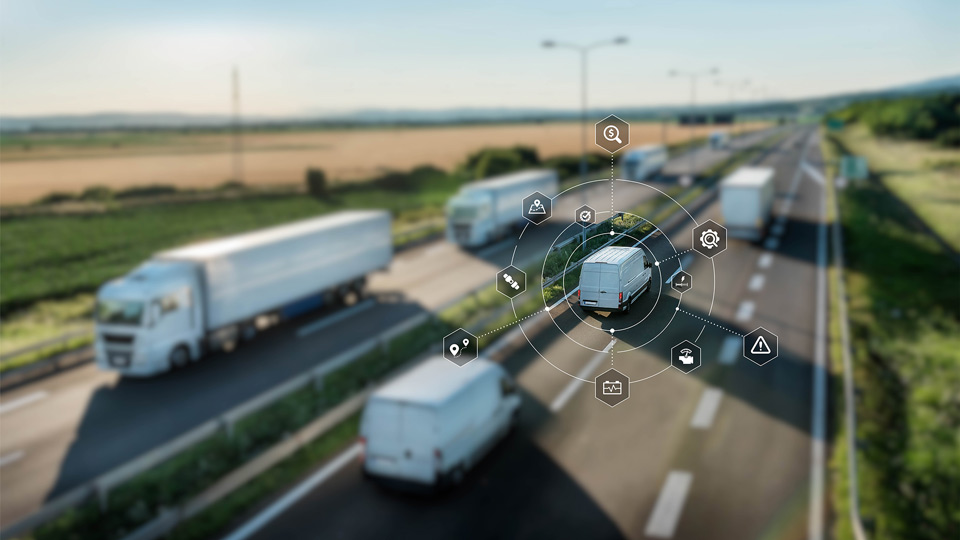
Putting fleet data quality to the test for risk management
March 25, 2022

Quick guide to off-road fleet tracking
November 2, 2019

Driving Innovation and Navigating Business Risks: Geotab's Gen AI Maturity Index
November 3, 2023
.jpg)
Greening the Fleet Survey
July 25, 2023





